
As you might know, AMD has managed to remain the leader in graphic chipsets, but Intel still holds both the mobile and hybrid computing markets. This is where the Accelerated Processing Unit (APU) comes in to play for it is a combination of CPU and GPU all rolled into one. It is AMD’s response to Intel’s SandyBridge and referred to as ‘Llano’. The AMD A6-3650 is the budget-friendly little brother to the AMD A8-3850 we did a review on last month. This APU by AMD retails for $119.99 on TigerDirect, which is $20.00 cheaper than its slightly bigger brother. The A6-3650 has a 2.6 GHz quad-core CPU, 443 Mhz GPU with 320 Radeon HD cores, 4 MB of L2 cache, and a 100W TDP compared to the A8-3850 2.9 GHz quad-core CPU, 600 MHz GPU with 400 Radeon HD cores, 4 MB L2 cache, and a 100W TDP. The difference may not be much, but it will mean this processor is not as fast. Either way this will be an enlightening review.
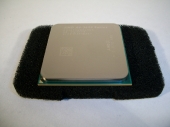 |
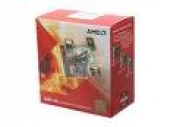 |
|
A quick look at ‘Llano’
The ‘Llano’ APU platforms by AMD have the ability to dynamically use Radeon cores for either computing or graphics dependent upon the tasks being run. This means efficient switching between GPU and CPU usage, which in turn means better performance. Additionally, ‘Llano’ supports DirectX11 with DirectCompute, HD-3D, AMD-Vision engine, UVD3, and OpenCL Acceleration. AMD’s flagship motherboard chipset, the A75, will offer native Superspeed USB 3.0 and SATA 3.0. For this review we will be using ASRock’s A75 Extreme6 motherboard. Currently AMD has 2 ‘Llano’ APU’s: the A8-3850 and the A6-3650.

Both of these are 100w Quad-core solutions. The AMD A8-3850 APU has the AMD Radeon HD 6550D GPU inside with 400 Radeon cores and a clock speed of 600MHz. The Radeon HD 6550D is capable of reaching 480 Giga Floating-point Operations per Second (GFLOPS) of GPU peak compute. The AMD A6-3650 APU has the Radeon HD 6530D GPU inside with 320 Radeon cores and a clock speed of 443MHz. The Radeon HD 6530 is capable of reaching 284 GFLOPS of GPU compute power. When it comes to potential peak GPU computing power the AMD A8-3850 has 59% more GFLOPS than the A6-3650 for an additional investment of only $20 at the time of purchase. If you care about GPU performance it might behoove you to pay that little bit extra for it; however, I would still recommend sticking around for the Test Rig results as the difference may not be as big as it seems.
An in-depth look at ‘Llano’
‘Llano’ represents the combination of a Northbridge, Quad-core CPU, and a Directx 11 GPU on one die. While this layout is similar to Intel’s SandyBridge design, the difference is in both the quality and performance of the GPU that AMD provides. While it remains to be seen if the ‘Llano’ family is the superior chip computationally as well as graphically I would not bet against them just yet.
As previously mentioned the AMD Turbo Core technology dynamically adjusts the CPU and GPU cores according to the processing load. So, if you are running a computationally intense application, the APU will pull Radeon cores to assist with the workload. This feature maximizes performance by smoothly transitioning between GPU and CPU based applications.
AMD Accelerated Parallel Processing
Dual Graphics (also known has Hybrid CrossFire) allows the user to put a discrete Radeon card on the platform and use it in CrossFire. This means both of the GPUs (The APU and the discrete GPU) work in tandem on the graphical output. This layout allows the APU to focus more on the CPU threads rather than juggling. During AMD’s preliminary testing the results ranged from 3 frames per second (fps) up to 20 fps difference between CrossFire and just using the APU.
Overclocking
At this time the APUs offered by AMD are multiplier-locked, which means you cannot simply over clock the processor. You would instead need to use a motherboard utility to over clock the entire rig. For this review I will not be over clocking anything.
AMD Vision Engine
AMD has upgraded their engine to the Vision Engine with the advent of the ‘Llano’ APUs. This engine has added upgrades to both Radeon core usage (shader configurations) and Universal Video Decoder (UVD3). The flagship accomplishment is their image stabilization technology, which will dynamically cut frames out of a shaky video and display a cleaner video (to help remove the ‘Home Video’ effect). While this looks promising it currently only supports play-back rather than allowing for a converted save.
An in-depth look at the AMD A6-3650
To get a better idea behind the architecture of this APU it will need to be dissected a bit for you. ‘Llano’ processors are made on a 32nm node with a chip die-size of 228 mm, which is very comparable to SandyBridge, the APU has roughly 1 Billion transistors.
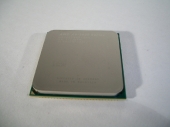 |
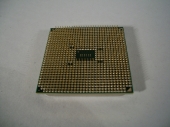 |
It has three primary elements merged into the APU, the Northbridge, the CPU and the GPU. Intel places more focus on raw CPU performance, AMD places more focus on the multi-media experience, thus the GPU.
There is more to be found inside the APU than what I have already mentioned. There is a DDR3 memory controller, Unified Video Decoder core logic, the Northbridge, a PCI Express interface, and last, but not least a DDI interface to output to digital monitors.
The Test Rig
All testing was done on a fresh install of Windows 7 64-bit. All benchmarks were completed on the desktop with no other software programs running at the time.
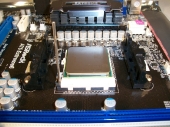 |
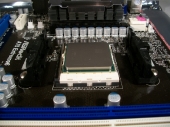 |
- Motherboard: ASRock A75 Extreme6
- APU: AMD A6-3650
- GPU: Radeon HD 6550D (in the APU)
- RAM: 7912 MB
- CPU Cooler: Cooler Master Hyper N520
- PSU: Thermaltake Toughpower XT 750W
- Case: Antec 900
- Storage: WD VelociRaptor 80GB SATA III HDD
- OS: 64-bit Windows 7
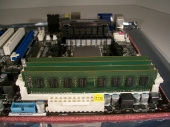 |
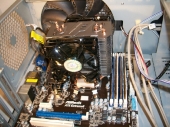 |
 |
 |
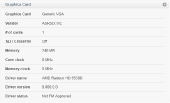 |
 |
 |
3D Mark Vantage is an industry benchmark that tests the frames per second (fps) and computations per second (cps) of the CPU and GPU combination. The 2301 the GPU scored in the APU test is comparable to entry-level Radeon cards (such as the 6530D included in the A6).
A 3DMark score is an overall measure of your system’s 3D gaming capabilities, based on comprehensive real-time 3D graphics and processor tests. By comparing your score with those submitted by millions of other gamers you can see how your gaming rig performs, making it easier to choose the most effective upgrades or finding other ways to optimize your system.
 |
 |
 |
 |
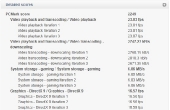 |
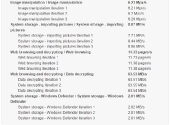 |
PC Mark Vantage is a tool used to test the efficiency of the entire system in a gaming environment. The 2249 score achieved here with the APU is most likely due to the APU changing back and forth between graphics performance and computational performance.
 |
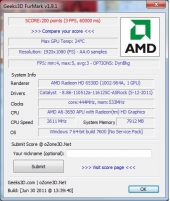 |
Furmark is a test designed to check both the thermal and performance limitations of a GPU. Here I did both 720p and 1080p tests with both just the APU. It is clearly evident that this chip is not meant for high end gaming
Cinebench is yet another tool used to test the efficiency of the GPU/CPU combination.
CINEBENCH is a cross platform test suite that evaluates your computer’s performance capabilities. CINEBENCH is based on MAXON’s award-winning animation software CINEMA 4D, which is used extensively by studios and production houses worldwide for 3D content creation. As you can see this APU did not score very high in comparison to other GPU/CPU combinations.
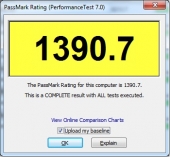 |
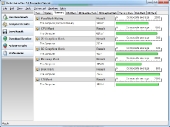 |
PassMark is a tool that tests the entire computer rig. From RAM timings to DVD read times, top to bottom.
Final Thoughts
The AMD A6-3650 ‘Llano’ performed quite well. I think AMD has the PC Gamer version of Intel’s SandyBridge without breaking the bank. While the AMD A6-3650 did not perform as well as the A8-3850, which was not a surprise given that it is a step down, it did perform amazingly well in the GPU department. Touching back on the price-point this APU can play today’s games as-is out-of-the-box without first investing in a high-end discrete graphics card. Additionally, when you do invest in an additional card you can CrossFire it and make use of both. This processor would be ideal for the casual gamer instead of the hard-core connoisseur or in the least an individual willing to over clock their entire rig.
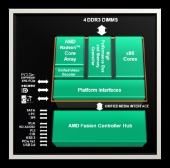
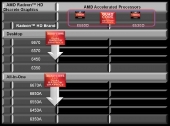
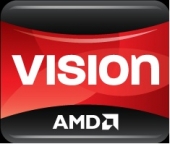
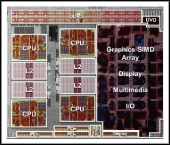


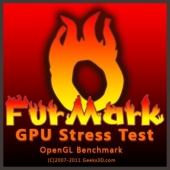




[…] high load operations like your video transcoding, more cores = faster encoding, here is a review — AMD A6-3650 APU/Processor | TechwareLabs. BASILISK — HOME PC — Reply With Quote + Reply to Thread […]
[…] Reviews goes inside the BitFenix Shinobi Computer CaseTechwareLabs shares its thoughts on the AMD A6-3650 APU/ProcessorKitGuru gives a listen to some KWorld Classic C40 Computer Speakers bit-tech takes on EYE: Divine […]
[…] story at Techware Labs. Posted in: Affiliate […]
[…] AMD A6-3650 APU/Processor Review @ TechwareLabs […]
[…] AMD A6-3650 APU/Processor Review @ […]